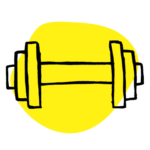What are braces?
What are braces?
Everything you need to know about braces treatment at the dentist.
In today’s world, braces are in great demand. People are more mindful of wanting a straighter, more beautiful, and healthier smile, and braces can give you just that. In the old days, braces were almost exclusive for children, but that is not true nowadays. In fact, adults are requesting braces just as much as children, if not more so.
The stigma of wearing braces has been removed and society welcomes and applauds those who make the decision to improve the function of their mouth, with the added benefit of having a nice set of teeth to help build confidence and self-esteem.
Find a dentist you'll love visiting!
Find a dentist you'll love visiting!
Find your new dentist in minutes with upfront quotes for a NEW PATIENT EXAM.
Search, Book and Manage your oral health for FREE, with AirSmile!
How much do braces cost?
How much do braces cost?
Find a dentist that offers dental check-ups, on AirSmile
The price for braces depends on many factors. The complexity of the case, how long the procedure will take, what type of braces you choose and of course the location of the practice and experience of the orthodontist all come into play.
On average, metal braces cost anywhere between $4500 to $8000, not far from clear braces which cost between $4500 to $8500. Invisalign and lingual braces are relatively new, and more esthetic options, so they are a bit more costly. Clear aligner cases start at $5000 and could reach up to $9000, and to top them all, a single jaw lingual braces treatment starts at about $7500, and a full 2 jaws treatment start at $12000.
What are the
advantages of braces?

Love your smile

Biocompatible

Long term investment

Restores function

Strongest solution

Safe and reliable
What are the
advantages of braces?
advantages of braces?


investment

stable



Learn more about braces.
Understanding your condition is the
key to making the right choices for you
Braces have a very distinct disadvantage, and that is their looks. They are composed of metallic parts of a bright silver color, and that makes their appearance unacceptable for most adults. Children however rarely had the choice to have braces which is why it was seen to be a procedure only done in younger years. Once you reached a certain age it seems the window of straightening your teeth had closed.
Manufacturers became aware of the fact that people are refraining from braces in adulthood because of how they look, and so started coming up with more esthetic solutions making them more suitable for adults. This is new development in orthodontics is clear aligners.
Without a doubt. While braces would give the same result for both children and adults, they are much easier and a lot faster when you start wearing them as a child. The ideal age is around 12 to 14 years of age, during the growth spurt period.
This is because during that time, the bones of the jaws are more malleable, and easy to adapt to the forces applied to them by the braces. This makes teeth movement easier and faster. In simpler terms, if an adult would take about a year to complete his\her braces treatment, a child – more accurately a teenager- would complete a similar treatment in about 6 to 8 months.
Traditional metal braces:
Old but gold silver braces sometimes called colored braces. These are composed of metallic brackets that are attached to the outer surface of the teeth, with a wire crossing them. The wire is held firmly in place by a set of colorful, round elastics (hence the term colored braces), and so the wire applies a pulling force moving the teeth where we need them to go.
Clear braces:
The first attempt at a more esthetic solution. Clear braces (also known as ceramic braces) are about the same as metal braces, but with one huge difference: the brackets are made of a clear, ceramic material rather than metal, improving the appearance a great deal. The wire is also treated with a white coating, and the elastics are white or transparent, making the whole setup a whole lot better looking.
Lingual braces:
As if clear braces weren’t enough, along with cam lingual braces. These are attached to the inner surface of the teeth – opposite the tongue and the palate – and so anyone who looks your way would see nothing attached to the teeth. Of course, these are a great esthetic option, but the technology is fairly new and they’re still working out the kinks. Their greatest disadvantage is that they are quite uncomfortable, always causing injuries to the tongue and the insides of your mouth.
All these 3 types are fixed, meaning they are attached to your teeth and you cannot remove them. The following type is quite the opposite.Clear aligners:
Clear aligners are the epitome of braces technology. This great invention came about to fix almost every problem related to traditional fixed braces. This system has no brackets, no wires, no elastics, and nothing attached to your teeth. Instead, these are replaced by a set of plastic, transparent molds known as aligners, which apply pressure to the teeth and move them to the desired location.
As you can probably imagine, these look great (invisible even) and are much more comfortable. Plus they are computer-made, making them incredibly fast and highly accurate. Finally, you can remove them whenever you need them, meaning when you attempt to clean your teeth, or when you have that special occasion that you just have to look your best in.
When the brackets are attached to the teeth, they become representatives of the teeth in the movement process, meaning wherever the brackets go, the teeth – being attached to them- will follow. The wire and elastics work together to apply a pulling force on the teeth (a very light but sustainable force to avoid damage to the bones and teeth) and that force displaces the teeth following the curvature of the wire. That happens for all types of fixed braces, metal, clear and lingual braces alike.
Invisalign has a different mode of action. The aligners are specially designed to apply a pushing rather than a pulling motion to the teeth. Each case needs about 20 to 25 aligners total, each adding a little bit of pressure compared to the previous, until the teeth reach their final destination.
Finally comes the retainer part. In some cases, a permanent teeth retainer is used which is a small thin piece of wire attached to the inside surface of the teeth. In others, a simple removable teeth retainer is used, which can be removed at mealtimes and during teeth brushing.
The price for braces depends on many factors. The complexity of the case, how long the procedure will take, what type of braces you choose and of course the location of the practice and experience of the orthodontist all come into play.
On average, metal braces cost anywhere between $4500 to $8000, not far from clear braces which cost between $4500 to $8500. Invisalign and lingual braces are relatively new, and more esthetic options, so they are a bit more costly. Clear aligner cases start at $5000 and could reach up to $9000, and to top them all, a single jaw lingual braces treatment starts at about $7500, and a full 2 jaws treatment start at $12000.
Find A Dentist Near You
ACT
NSW
NT
QLD
SA
TAS
VIC
WA
ACT
NSW
NT
QLD
SA
TAS
VIC
WA